
Augustinians are members of several religious orders that follow the Rule of Saint Augustine, written in about 400 AD by Augustine of Hippo. There are two distinct types of Augustinians in Catholic religious orders dating back to the 12th–13th centuries:
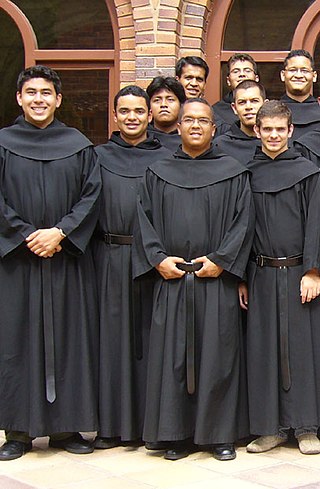
A friar is a member of one of the mendicant orders in the Roman Catholic Church. There are also friars outside of the Roman Catholic Church, such as within the Anglican Communion. The term, first used in the 12th or 13th century, distinguishes the mendicants' itinerant apostolic character, exercised broadly under the jurisdiction of a superior general, from the older monastic orders' allegiance to a single monastery formalized by their vow of stability. A friar may be in holy orders or be a non-ordained brother. The most significant orders of friars are the Dominicans, Franciscans, Augustinians, and Carmelites.

Mendicant orders are, primarily, certain Roman Catholic religious orders that have adopted for their male members a lifestyle of poverty, traveling, and living in urban areas for purposes of preaching, evangelization, and ministry, especially to the poor. At their foundation these orders rejected the previously established monastic model, which prescribed living in one stable, isolated community where members worked at a trade and owned property in common, including land, buildings and other wealth. By contrast, the mendicants avoided owning property at all, did not work at a trade, and embraced a poor, often itinerant lifestyle. They depended for their survival on the goodwill of the people to whom they preached. The members of these orders are not called monks but friars.
The Canons Regular of St. Augustine are priests who live in community under a rule and are generally organised into religious orders, differing from both secular canons and other forms of religious life, such as clerics regular, designated by a partly similar terminology. As religious communities, they have laybrothers as part of the community.
A canoness is a member of a religious community of vowed women, historically a stable community dedicated to the celebration of the Liturgy of the Hours in a particular church. The name corresponds to a canon, the male equivalent, and both roles share a common historical origin. As with the canons, there are two types: canonesses regular, who follow the Rule of St Augustine, and secular canonesses, who follow no monastic rule of life.
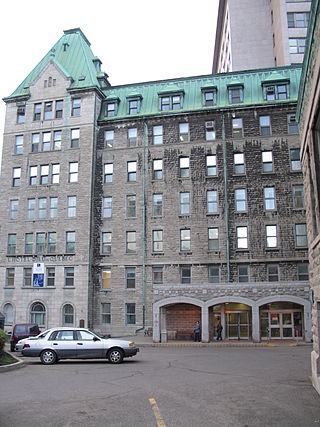
The Hotel-Dieu de Québec is a teaching hospital located in Quebec City, Quebec, Canada, and affiliated with Université Laval's medical school. It is part of the Centre hospitalier universitaire de Québec (CHUQ), a network of five teaching hospitals and several specialized institutions. Its areas of expertise include cancer treatment, kidney disease and cochlear implants. It has an affiliated research centre, the Centre de recherche de l’Hôtel-Dieu de Québec.

The Monastery of the Holy Saviour at Lecceto in Tuscany, was the principal House of the order of the Hermit Friars of Saint Augustine in 1256, when Pope Alexander IV constituted the Augustinian order internationally. It was dedicated to Jesus as Saviour.
Independent Augustinian communities are Roman Catholic religious communities that follow the Augustinian Rule, but are not under the jurisdiction of the Prior General of the Augustinian hermits in Rome.
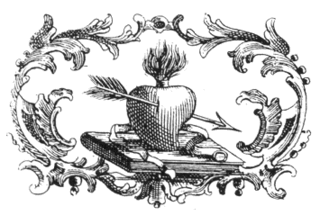
The Order of Saint Augustine, abbreviated OSA, is a mendicant religious order of the Catholic Church. It was founded in 1244 by bringing together several eremitical groups in the Tuscany region who were following the Rule of Saint Augustine, written by Saint Augustine of Hippo in the fifth century.
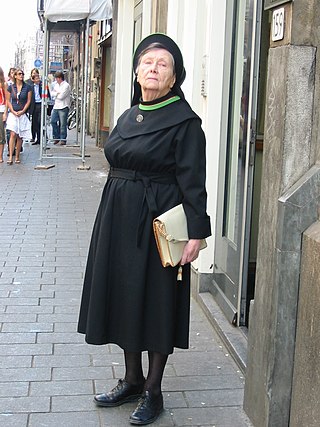
Augustinian nuns are the most ancient and continuous segment of the Roman Catholic Augustinian religious order under the canons of contemporary historical method. The Augustinian nuns, named after Saint Augustine of Hippo, are several Roman Catholic enclosed monastic communities of women living according to a guide to religious life known as the Rule of St. Augustine. Prominent Augustinian nuns include Italian mystic St. Clare of Montefalco and St. Rita of Cascia.
The Religious Hospitallers of Saint Joseph are a Catholic religious congregation founded in 1636 at La Flèche, France, by the Venerable Jérôme le Royer de la Dauversière and the Venerable Marie de la Ferre.

The Hôpital-Général de Québec is a Canadian medical facility located in the tiny municipality of Notre-Dame-des-Anges, Quebec, surrounded by the La Cité-Limoilou borough of Quebec City. It was classified as an historic site in 1977 by the Quebec government. Additionally, an archeological site listed on the Inventaire des sites archéologiques du Québec is located there.

Mary Catherine of St. Augustine, OSA was a French canoness regular who was instrumental in the development of the Hôtel-Dieu de Québec in the colony of New France. She has been beatified by the Catholic Church.
The Missionary Sisters of the Immaculate Heart of Mary (I.C.M.) are a Roman Catholic religious institute of pontifical right of women, dedicated to the service of those in need in the Third World.

The Augustinian Province of England and Scotland is an administrative unit for the Order of Saint Augustine that covers England and Scotland. It comprises all the Augustinian works that take place in England and Scotland.

St. Vincent Charity Medical Center is a medical facility in Cleveland, Ohio. It was founded in 1865 under the auspices of the Roman Catholic Diocese of Cleveland. It has been administered for much of its history by the Sisters of Charity of St. Augustine. The medical center previously operated a main hospital in downtown Cleveland, with additional medical offices elsewhere in Cleveland as well as the suburbs of Independence, Rocky River, Solon and Westlake. In 2022, the main hospital closed, although some outpatient medical services still exist at the site of the former hospital.
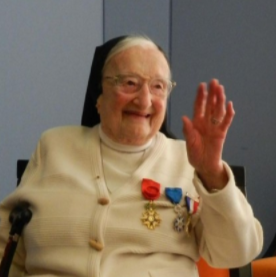
Agnès Cécile Marie-Madeleine Valois, also known as Sister Agnès-Marie, was a French Roman Catholic religious sister and nurse. She became known as "Angel of Dieppe" for her heroic efforts in caring for soldiers at the disastrous World War II Dieppe Raid. For this she was decorated by France and Canada. An Augustinian sister, she had been trained as a surgical nurse before the war. She died on 19 April 2018 at the age of 103, at a monastery near Dieppe, France.
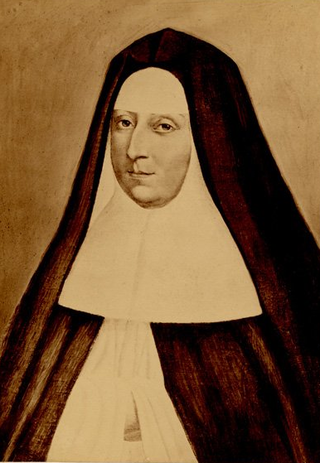
Jeanne-Françoise Juchereau de la Ferté de Saint-Ignace was a hospitaller nun of the Order of the Canonesses of St. Augustine of the Mercy of Jesus. She was the 6th superior of the Hôtel-Dieu de Québec hospital and the first Canadian (Canadienne) to hold this position.













